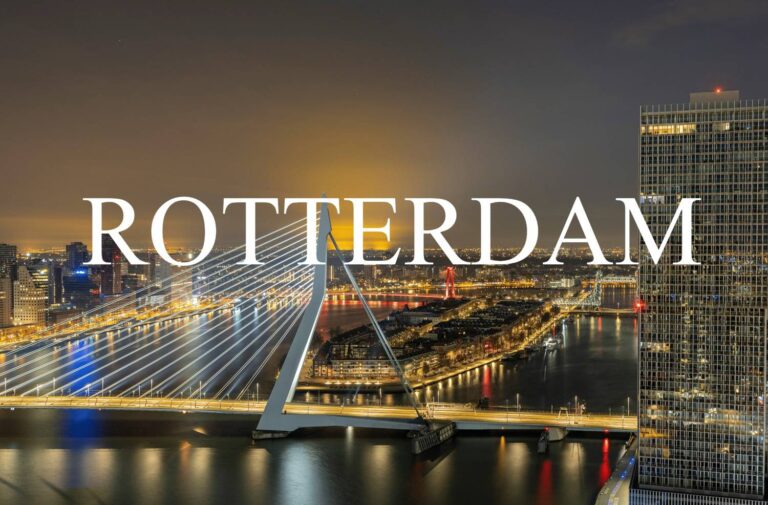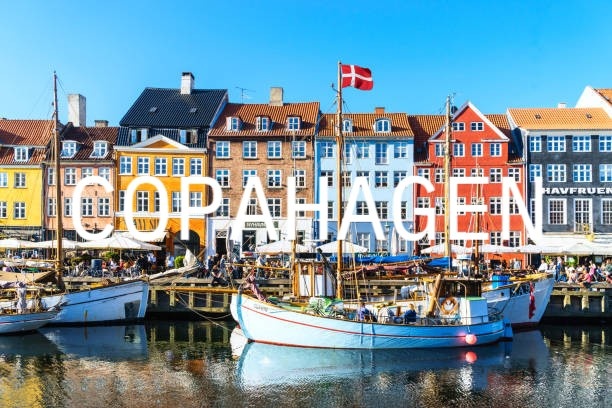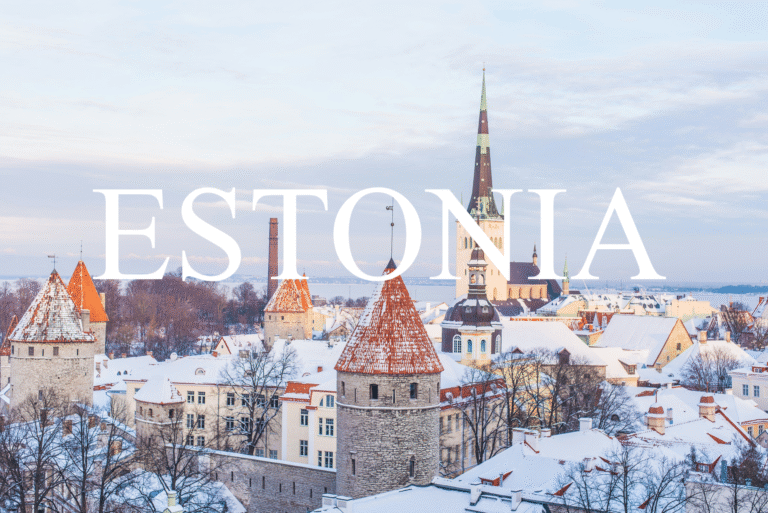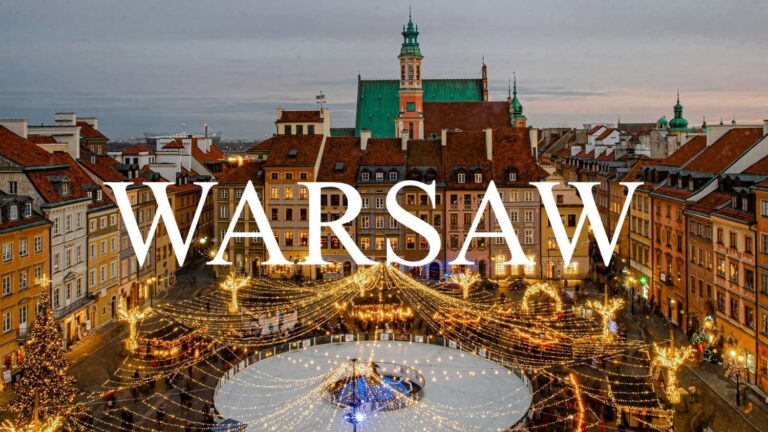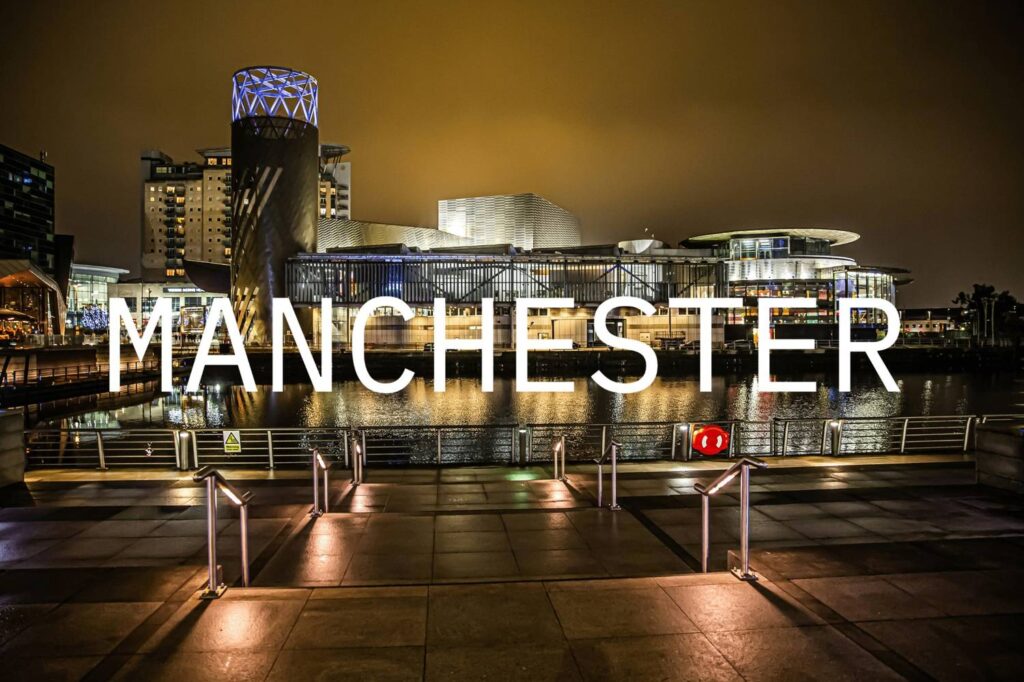
Manchester, the dynamic heart of northwest England, is a city where history, creativity, and modern energy converge in every corner. Famous for its pivotal role in the Industrial Revolution, Manchester has evolved from a powerhouse of manufacturing into a forward-thinking, multicultural hub that celebrates both its past and its progressive spirit.
From the red-brick charm of its historic mills and warehouses to cutting-edge architecture and lively public squares, Manchester is a city that blends heritage with innovation. Music lovers will find themselves in a legendary setting — the birthplace of iconic bands like Oasis, The Smiths, and Joy Division. The streets here hum with creativity, from independent art galleries and street murals to buzzing live music venues that keep the city’s rhythm alive.
For sports enthusiasts, Manchester is nothing short of sacred. With two world-renowned football clubs — Manchester United and Manchester City — the city’s devotion to the game is unmatched. You can feel the passion in every stadium tour, match-day pub gathering, and fan mural across town.
Manchester’s cultural offerings are just as rich. Explore the thought-provoking exhibits at the Science and Industry Museum, get inspired at the Manchester Art Gallery, or enjoy live performances at the Royal Exchange Theatre. The city’s neighborhoods each have their own vibe — from the trendy cafés and vintage shops of the Northern Quarter to the upscale boutiques and fine dining in Spinningfields.
Foodies will fall in love with Manchester’s culinary scene, which reflects the city’s diverse population. From Michelin-starred restaurants and traditional British pubs to vibrant street food markets and authentic cuisines from around the world, there’s always something to tempt your taste buds.
Whether you’re wandering along the canals of Castlefield, shopping at the iconic Arndale Centre, or sipping cocktails on a rooftop bar with panoramic views, Manchester offers something for everyone — and does it with a distinctly friendly, Northern charm.
🗓️ Best Time to Visit Manchester
🌿 Spring to Early Autumn (April to September)
This is the best time to visit Manchester, with temperatures ranging from 12°C to 22°C (54°F – 72°F). Expect longer days, major festivals, and ideal weather for exploring the city’s outdoor attractions and historic districts.
🌧️ Late Autumn to Winter (October to March)
Cooler months (5°C to 10°C / 41°F – 50°F) with more rain but fewer crowds. Perfect for museum visits, cozy cafés, and festive markets. Don’t forget your umbrella—Manchester is famously rainy!
💵 Currency & Travel Essentials
- Currency: British Pound Sterling (GBP, £)
- Language: English
- Transportation: Metrolink trams, buses, trains, taxis, and bike rentals
- Average Daily Budget:
- Budget: £50–£80
- Mid-range: £90–£140
- Luxury: £150+
🏙️ 10 Best Places to Visit in Manchester
Science and Industry Museum

The Science and Industry Museum in Manchester is a must-visit for anyone curious about the history of science, technology, and industry. Situated in a historic industrial complex, this museum celebrates the incredible contributions of Manchester to the fields of engineering, innovation, and industrialization. With a collection that spans from the first industrial revolution to the digital age, the museum offers an engaging experience for visitors of all ages.
From the oldest surviving passenger railway station to cutting-edge displays on space exploration and engineering marvels, the Science and Industry Museum brings to life the stories of human ingenuity and technological progress.
🌟 Highlights of the Science and Industry Museum
🚂 The World’s First Passenger Railway Station
- One of the museum’s key highlights is the original site of the world’s first passenger railway station, Liverpool Road Station, where the first passenger trains in the world departed. Discover how Manchester helped shape the railway revolution that transformed transport worldwide.
🔬 Innovations in Science and Technology
- The museum’s exhibitions showcase Manchester’s role in pioneering key technologies, such as computing and medicine. Explore displays on the first computers ever made and the legacy of Alan Turing, the brilliant mathematician and computer science pioneer.
⚙️ Industrial Revolution Exhibits
- Step back in time and discover how Manchester became the heart of the industrial revolution. The museum offers fascinating exhibits on textile production, steam power, and the factories that fueled the growth of the industrial world.
🚀 Space Exploration & Aviation
- The museum features a section dedicated to space exploration, including spacecraft models, and a collection of aviation artifacts. It’s a great opportunity to learn about humanity’s journey to the stars and the technical challenges of space travel.
🔋 Energy and Environmental Innovations
- The museum highlights the future of energy and environmental sustainability through interactive displays that explain everything from solar power to electric vehicles. Learn about cutting-edge innovations that aim to solve some of the world’s biggest challenges.
🏭 Historic Machinery and Steam Engines
- Marvel at the impressive collection of historic machinery, including working steam engines, locomotives, and other industrial artifacts. These massive machines tell the story of how Manchester transformed into a hub of industry during the 19th and early 20th centuries.
📍 How to Get There
- Location: The museum is situated in Castlefield, close to the city center, making it easy to access from other key attractions in Manchester.
- By Public Transport: The Museum is well-served by buses and trams. The nearest tram stop is Science and Industry Museum on Metrolink Line 1, making it simple to get to from anywhere in the city.
- By Foot: It’s just a short walk from Manchester’s Deansgate and Castlefield areas, so if you’re staying nearby, you can enjoy a lovely stroll along the canals.
🕒 Visitor Information
- Best Time to Visit: The museum is great to visit at any time of year, but spring and summer provide the best weather for exploring the outdoor exhibits, such as the historic locomotives and working steam engines.
- Opening Hours: The museum is open daily from 10 AM to 5 PM. It’s always a good idea to check the website for updates, especially during special events or school holidays.
- Admission: Entry to the museum is free, though there may be charges for special exhibitions or activities. Donations are welcome to help support the museum’s programs.
💡 Travel Tips
- 👨👩👧 Perfect for Families: The museum offers a range of hands-on activities for children, making it a fantastic spot for families to explore science and history in an engaging way.
- 🧑🏫 Guided Tours and Talks: Make the most of your visit by booking a guided tour or attending one of the many expert talks or workshops held regularly at the museum.
- 🎥 Photography: The museum’s vast displays of machinery and historic artifacts make it a perfect place for photography, so don’t forget to bring your camera.
- 📅 Check the Event Calendar: The Science and Industry Museum frequently hosts special events, including science talks, live demonstrations, and hands-on workshops. Check the calendar to coincide your visit with one of these exciting events.
The Science and Industry Museum in Manchester is a place where history and innovation collide. Whether you’re fascinated by the industrial revolution, the space age, or the latest breakthroughs in technology, the museum offers something for everyone. Its combination of historical artifacts, interactive exhibits, and live demonstrations makes it a great choice for anyone looking to understand the pivotal role that science and industry have played in shaping our world.
Manchester Art Gallery
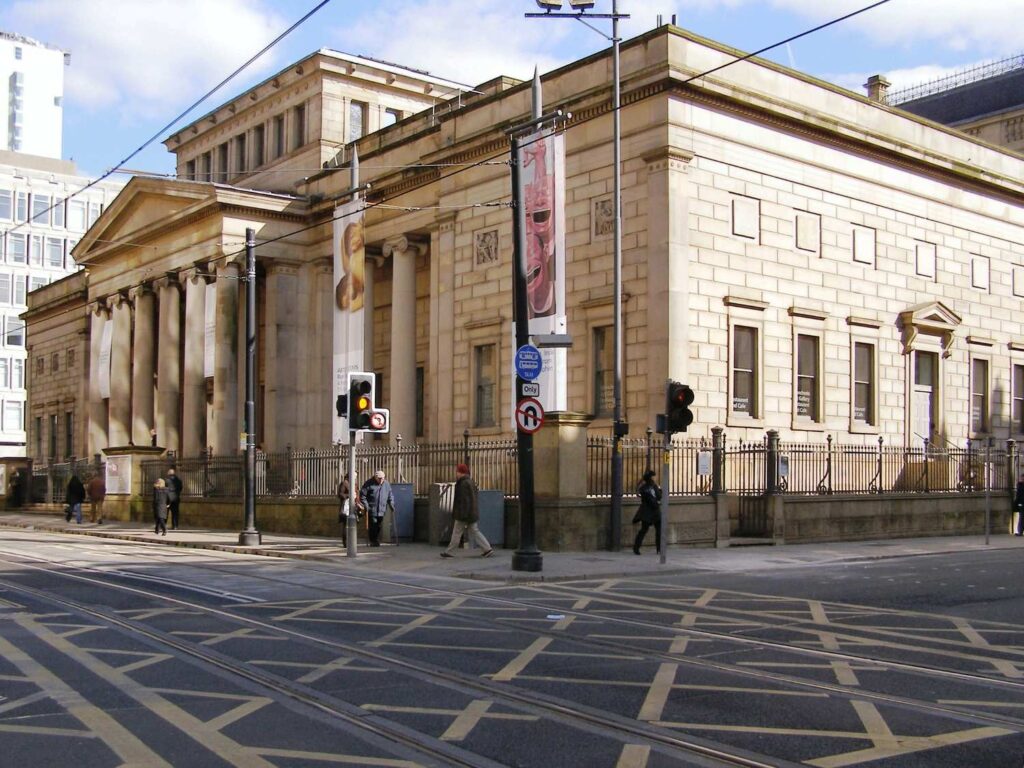
Manchester Art Gallery is one of the city’s most iconic and cherished cultural destinations, offering visitors a stunning collection of art spanning centuries and styles. Situated in the city center, this impressive gallery is a must-see for art lovers, history enthusiasts, and anyone looking to explore the rich cultural heritage of Manchester. The gallery houses an extensive collection of British and European art, alongside modern and contemporary pieces, making it a vibrant space for artistic discovery and inspiration.
🌟 Highlights of Manchester Art Gallery
🖼️ Diverse Art Collections
Manchester Art Gallery is home to a remarkable collection of over 25,000 works of art, which cover a wide range of historical periods, including the 18th and 19th centuries, Victorian art, and British portraiture. Its collection also spans pre-Raphaelite paintings, Impressionist masterpieces, and works by famous artists like JMW Turner, L.S. Lowry, and Edwin Landseer.
The gallery’s modern and contemporary collections feature works by David Hockney, Grayson Perry, and other leading artists, offering visitors a dynamic mix of both classical and cutting-edge art.
🎨 Rotating Exhibitions and Special Displays
In addition to its permanent collection, Manchester Art Gallery regularly hosts temporary exhibitions that showcase both national and international artists. These rotating exhibitions often focus on innovative themes, artistic movements, and collaborations that challenge and engage visitors with new perspectives on contemporary culture.
Past exhibitions have included everything from installation art and photography to fashion and crafts, making each visit a unique experience. Whether you’re interested in experimental art or classic masterpieces, the gallery’s exhibition program is diverse and always evolving.
🏛️ The Architecture and Space
The gallery building is a stunning blend of classic and modern architecture. The original structure, dating back to 1823, is a fine example of neo-classical design, with grand columns and stately interiors. Over the years, the gallery has expanded to incorporate more contemporary spaces, including the Atrium, which hosts a variety of special events, performances, and exhibitions.
This combination of old and new architectural styles creates an inviting and inspiring environment for both art viewing and cultural engagement.
🗣️ Engaging Programs and Activities
Manchester Art Gallery offers a variety of educational programs designed to engage visitors of all ages. Whether you’re a school group, a family, or an art student, the gallery provides a wide range of activities, including workshops, guided tours, and lectures. The gallery also runs interactive art programs, encouraging visitors to engage with the artwork through hands-on activities and creative challenges.
The gallery is committed to making art accessible, with many programs available for free or at a reduced cost.
📍 How to Get There
Address: Manchester Art Gallery, Mosley Street, Manchester, M2 3JL, UK, right in the heart of Manchester city center, surrounded by major landmarks such as Albert Square and the Manchester Town Hall.
- By Public Transport: The gallery is easily accessible by bus and tram from various parts of Manchester. The nearest tram stop, St. Peter’s Square, is just a short walk away. Manchester Piccadilly Station is also close, making the gallery easily reachable from the train station.
- By Foot: The gallery is a quick walk from Manchester’s main shopping district, including King Street and Deansgate, allowing visitors to explore the city center as they make their way to the gallery.
- By Car: There are several car parks in the city center, including options near the Art Gallery, with plenty of spaces available.
🕒 Visitor Information
- Best Time to Visit: Manchester Art Gallery is open throughout the year, with a changing program of exhibitions. Visiting during the weekdays generally offers a quieter experience, though weekends can be vibrant with special events and family-friendly activities.
- Admission Fees: Entry to the permanent collection is free. Some temporary exhibitions may require a small entrance fee, so it’s worth checking in advance for any special charges.
- Accessibility: Manchester Art Gallery is fully wheelchair accessible, with lifts, ramps, and accessible facilities. There are also areas for visitors with hearing impairments and visual impairments, ensuring a welcoming experience for all.
💡 Travel Tips
🖼️ Explore the Gallery’s Hidden Gems:
While the gallery’s major collections are popular, be sure to explore some of the lesser-known works in its collection galleries. There are often hidden gems tucked away that can offer a more intimate and personal experience with art.
🎥 Take a Guided Tour:
For a deeper understanding of the art on display, consider joining a guided tour. The expert guides provide fascinating insights into the stories behind the artworks, artists, and historical contexts, enhancing your overall experience.
🎨 Check Out Special Events:
Manchester Art Gallery hosts a variety of special events, from artist talks and workshops to film screenings and live performances. These events are an excellent way to engage further with the art world and interact with artists and fellow art lovers.
🏙️ Explore the Surrounding Area:
After your visit, take time to explore the Manchester city center. The gallery is surrounded by iconic landmarks such as the Manchester Town Hall, Albert Square, and the John Rylands Library, all within walking distance. The nearby Northern Quarter also offers a vibrant mix of independent shops, cafes, and street art.
Manchester Art Gallery is a cultural treasure in the heart of one of the UK’s most dynamic cities. Whether you’re an art enthusiast, a family looking for a creative day out, or simply someone curious about Manchester’s rich artistic history, the gallery offers an unforgettable experience. With its impressive collections, rotating exhibitions, and commitment to education and engagement, a visit to this gallery is an opportunity to immerse yourself in the world of art and creativity.
The John Rylands Library
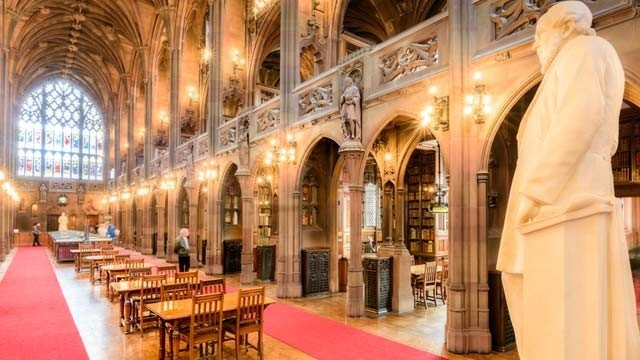
The John Rylands Library is a breathtaking Gothic-style library in the heart of Manchester, renowned for its stunning architecture, vast collection of rare books, and rich history. As one of the most significant libraries in the world, it houses over 250,000 printed volumes, along with manuscripts and archives that span centuries of human knowledge and creativity. This magnificent building offers visitors not just a place to discover rare texts, but also an opportunity to step inside a piece of architectural history.
Named after John Rylands, a wealthy industrialist and philanthropist who funded its creation, the library opened its doors in 1900 and remains one of Manchester’s most cherished landmarks. Whether you’re a bibliophile, a lover of architecture, or simply someone who appreciates beauty and history, The John Rylands Library is a must-see destination.
🌟 Highlights of The John Rylands Library
📖 The Rare and Historic Collections
- The library boasts an extensive collection of rare manuscripts, including ancient medieval texts, early printed books, and literary treasures. Among its most famous pieces is the St. John Fragment, one of the oldest surviving pieces of the New Testament written in Greek.
- It also houses a significant collection of Victorian literature, manuscripts of famous authors, and historical documents that chronicle the literary and intellectual history of Britain and beyond.
🏰 Stunning Gothic Architecture
- The library’s design, created by architect George Frederick Bodley, is a stunning example of Victorian Gothic architecture. The towering spires, intricately carved stonework, and vast vaulted ceilings create an awe-inspiring atmosphere. The central Reading Room is particularly impressive, with its beautiful wood paneling and stained-glass windows.
- The Library’s Entrance Hall is equally grand, featuring a magnificent staircase and beautiful stone carvings, making visitors feel like they’re stepping into a medieval cathedral.
🖋️ Exhibitions and Special Collections
- The John Rylands Library regularly hosts temporary exhibitions, highlighting specific topics, authors, or collections. Past exhibitions have focused on ancient texts, women writers, and the history of the book, offering visitors new insights into the world of literature and knowledge.
- The library’s special collections include works related to religion, philosophy, the sciences, and art, making it a perfect destination for those interested in a wide range of subjects.
🌍 The History of the Library
- Learn about the fascinating history of the library itself, from its founding by John Rylands to its expansion and transformation into one of the most important libraries in the UK. The library’s heritage and its role in preserving knowledge and culture is as captivating as the books it houses.
📍 How to Get There
- Location: The John Rylands Library is located on Deansgate in Manchester, right near the city center and easily accessible from many other key attractions.
- By Public Transport: The library is easily accessible by public transport. The Deansgate-Castlefield tram stop is just a short walk away, and Manchester Piccadilly and Manchester Victoria train stations are nearby.
- By Foot: If you’re staying in central Manchester, the library is just a short walk from Spinningfields, the Northern Quarter, and other popular areas of the city.
🕒 Visitor Information
- Best Time to Visit: The John Rylands Library is open to visitors year-round. It’s particularly lovely during the spring and autumn months when the light streams through the stained-glass windows, enhancing the atmosphere. If you prefer fewer crowds, try visiting during the weekdays or in the morning when it’s quieter.
- Opening Hours: The library is open Monday to Saturday from 10 AM to 5 PM and Sunday from 12 PM to 5 PM.
- Admission: Entry to the library is free, but donations are encouraged to support its preservation and ongoing work. Special exhibitions or events may have a separate fee.
💡 Travel Tips
- 📚 Explore the Special Collections: If you have a deep interest in literature, make sure to check out the library’s special collections and ask the staff about any exhibits or manuscripts on display.
- 📸 Photography: The library’s beautiful architecture, especially the Reading Room, is perfect for photography. Don’t forget to take some shots of the ornate arches and stained-glass windows, but be sure to follow any photography guidelines in place.
- 🏛️ Take a Guided Tour: For a deeper understanding of the library’s collections and its history, consider joining a guided tour. These tours often provide insights into the library’s fascinating past and its role in Manchester’s cultural development.
- 🧑🤝🧑 Attend an Event: The John Rylands Library frequently hosts lectures, workshops, and author talks. Check their schedule before you visit to see if there are any events that might pique your interest.
The John Rylands Library is more than just a place to read—it’s a literary sanctuary that combines the awe-inspiring beauty of Gothic architecture with an unparalleled collection of books, manuscripts, and historical documents. Whether you’re an academic, a history lover, or someone who simply enjoys beautiful spaces, the library offers a peaceful and enriching experience that’s well worth the visit. It’s a place where knowledge, history, and architectural wonder come together in one of Manchester’s most treasured landmarks.
Manchester Cathedral
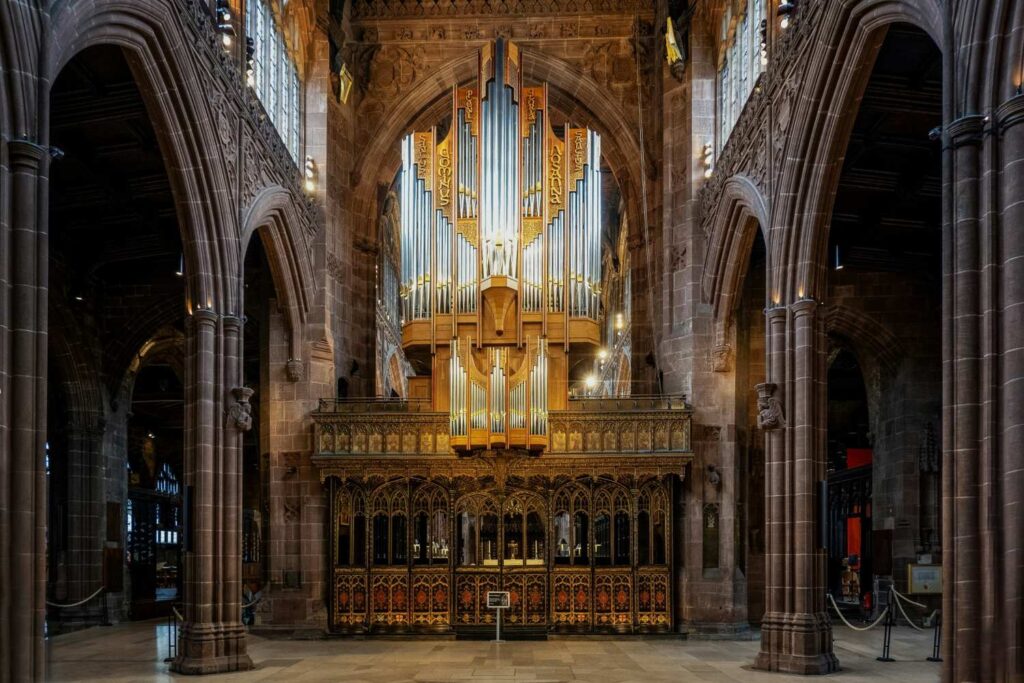
Manchester Cathedral, also known as The Cathedral and Collegiate Church of Saint Mary, Saint Denys, and Saint George, is one of Manchester’s most iconic landmarks, offering a striking combination of medieval architecture, rich history, and modern relevance. Situated in the heart of Manchester’s city center, this magnificent Gothic structure has stood as a place of worship for over 600 years, offering visitors a glimpse into the city’s past and its ongoing spiritual life.
Whether you’re interested in its impressive architecture, medieval art, or serene atmosphere, Manchester Cathedral offers a unique experience that blends history, faith, and culture in a vibrant urban setting.
🌟 Highlights of Manchester Cathedral
🏰 A Historic and Architectural Masterpiece
Manchester Cathedral boasts some of the finest examples of Gothic architecture in the UK. The building’s tower, with its magnificent spire, rises proudly above the surrounding cityscape, offering stunning views of Manchester. The interior of the cathedral is equally breathtaking, with soaring arches, intricately carved woodwork, and stained glass windows depicting scenes from biblical stories.
One of the cathedral’s most famous features is the Great West Window, which dates back to the 15th century and is regarded as one of the finest examples of medieval stained glass in England.
The Quire, which is the area where the choir sings, showcases detailed wooden carvings and gilded accents, enhancing the cathedral’s sacred and historical ambiance.
🎶 Spiritual and Cultural Heritage
As a place of worship, Manchester Cathedral continues to serve as a spiritual hub for the city. It holds regular services, including Eucharist, Choral Evensong, and special liturgies, where visitors can witness the choir’s moving performances. The organ concerts held throughout the year are also a highlight, drawing music lovers from across the region.
Beyond its religious significance, the cathedral hosts various cultural events, from art exhibitions to community outreach programs. Its combination of sacred space and community involvement makes it a welcoming destination for people of all faiths and backgrounds.
🖼️ Beautiful Art and Memorials
Manchester Cathedral houses a remarkable collection of artworks, many of which are tied to its long history. You’ll find paintings, sculptures, and memorials dedicated to notable figures from Manchester’s past, as well as significant historical events.
Among the cathedral’s most poignant features is the Barton Memorial, which honors those lost during World War I. The cathedral is also home to an impressive collection of modern art, including pieces that highlight the connection between faith and creativity.
🌿 The Cathedral Gardens and Surroundings
The cathedral is surrounded by beautiful gardens, including the peaceful Cathedral Gardens and the Harris Memorial Gardens, offering a tranquil spot for reflection or a break from exploring the city. These outdoor spaces are perfect for visitors to relax and enjoy the serene atmosphere of this historic site.
📍 How to Get There
Address: Manchester Cathedral, Victoria Street, Manchester, M3 1SX, UK, situated near Exchange Square and close to major attractions like The Manchester Arena and The National Football Museum.
- By Public Transport: The cathedral is easily accessible by bus and tram. The nearest Victoria Station and Exchange Square tram stop are within a few minutes’ walk, making it convenient to reach from various points around the city.
- By Foot: Manchester Cathedral is centrally located, making it a short walk from major landmarks such as The Arndale Centre, The Printworks, and Deansgate.
- By Car: There are several car parks around the cathedral, including the Shudehill car park and the NCP Car Park near Victoria Station.
🕒 Visitor Information
- Best Time to Visit: Manchester Cathedral is open year-round, with weekdays being a quieter time for visitors. If you prefer a more lively atmosphere, consider visiting during a weekend service or a special event, such as Christmas services or Easter services.
- Admission Fees: Entry to the cathedral is free. However, donations are encouraged to help with the upkeep of this historical site. Special events and guided tours may have a small fee.
- Accessibility: The cathedral is fully wheelchair accessible, with ramps and lifts available for those with mobility issues. Hearing loops are available for services, and large print versions of services are provided for those with visual impairments.
💡 Travel Tips for Visiting Manchester Cathedral
📸 Capture the Beauty:
The cathedral offers numerous photographic opportunities, both inside and outside. The Gothic architecture, stained glass windows, and the tranquil gardens provide plenty of chances for stunning photos.
🎶 Attend a Service or Event:
Whether you’re religious or not, attending a service or a choir performance in the cathedral is a moving experience. The Manchester Cathedral Choir is renowned for its beautiful renditions, and the building’s acoustics enhance every note.
🏙️ Explore the Surrounding Area:
After your visit, take time to explore the historic center of Manchester. The cathedral is close to cultural attractions like the Manchester Art Gallery, the Museum of Manchester, and the vibrant Northern Quarter, full of quirky shops and cafes.
🎓 Learn the History:
Be sure to ask for a guided tour or audio guide to get the full historical context behind the cathedral. You’ll learn about the building’s medieval roots, its restoration following bomb damage during World War II, and its role in Manchester’s development.
Manchester Cathedral is more than just a place of worship—it is a testament to the city’s history, culture, and spiritual life. Its rich Gothic architecture, stunning stained glass, and moving performances create a deeply immersive experience for visitors. Whether you’re seeking spiritual reflection, a cultural experience, or simply a moment of peace amidst the bustling city, Manchester Cathedral offers an unforgettable visit.
Old Trafford & Etihad Stadium
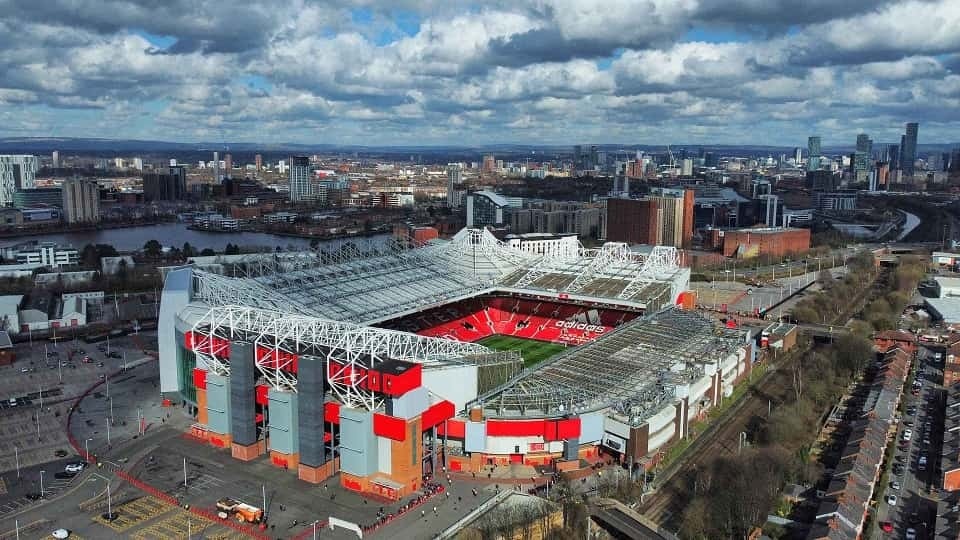
Manchester is not only famous for its industrial heritage and vibrant cultural scene but also for being the home of two of the world’s most iconic football clubs—Manchester United and Manchester City. The city boasts two legendary stadiums, Old Trafford and Etihad Stadium, which are not only the heart of Manchester’s football culture but also landmarks in their own right. Whether you’re a passionate football fan or simply want to experience the thrill of these famous arenas, both of these stadiums offer unforgettable experiences.
🌟 Highlights of Old Trafford & Etihad Stadium
🏟️ Old Trafford – The Theatre of Dreams
- Known as the Theatre of Dreams, Old Trafford is the home ground of Manchester United and one of the most famous football stadiums in the world. With a capacity of over 74,000, Old Trafford has hosted countless unforgettable moments, from Premier League victories to Champions League triumphs.
- The stadium’s museum offers a deep dive into the club’s illustrious history, with a rich collection of trophies, memorabilia, and interactive exhibits celebrating legendary players like Sir Bobby Charlton, Eric Cantona, Cristiano Ronaldo, and Wayne Rooney.
🌍 Etihad Stadium – The City of Dreams
- Etihad Stadium is the proud home of Manchester City. Known for its modern design and state-of-the-art facilities, the stadium is an integral part of the club’s ambitious transformation. With a seating capacity of 53,000, it’s one of the most impressive and technologically advanced football venues in the UK.
- The Manchester City Experience tour takes you through the club’s history, giving you a behind-the-scenes look at the locker rooms, trophy room, and press areas. Learn about the club’s journey from its humble beginnings to becoming one of the world’s top football clubs.
⚽ Match Day Experience
- Whether you’re supporting Manchester United at Old Trafford or cheering for Manchester City at Etihad Stadium, attending a match at either stadium is an electric experience. The matchday atmosphere is unmatched, with tens of thousands of passionate fans creating a sea of color and energy.
- Old Trafford offers a traditional football experience with its iconic Stretford End, while Etihad Stadium delivers a modern and immersive experience with its cutting-edge technology and fan engagement initiatives.
🏆 Stadium Tours
- Both Old Trafford and Etihad Stadium offer guided stadium tours that let visitors explore areas usually off-limits to the public, such as players’ tunnel, dressing rooms, and VIP boxes. These tours offer a unique behind-the-scenes perspective, allowing fans to step into the footsteps of their football heroes.
- Visitors can also learn about the rich history of the clubs, from their formation and legendary managers to the triumphs and glories that have defined them.
📍 How to Get There
- Old Trafford:
- Location: Old Trafford is located 2 miles south of Manchester city center, in the Old Trafford area.
- By Public Transport: You can take a train from Manchester Piccadilly to Old Trafford station (about 10-15 minutes). Alternatively, buses and trams also service the area, with Tram line 2 stopping nearby.
- By Foot: If you’re staying in central Manchester, it’s about a 25-minute walk to Old Trafford from the city center.
- Etihad Stadium:
- Location: Etihad Stadium is located in the East Manchester area, not far from the city center.
- By Public Transport: The easiest way to get to the Etihad is by Metrolink tram, which takes you directly to the Etihad Campus station in about 10 minutes from Manchester Piccadilly.
- By Foot: Etihad is around a 30-minute walk from central Manchester, and you can enjoy views of the city along the way.
🕒 Visitor Information
- Best Time to Visit: The best time to visit either stadium is during matchdays when the atmosphere is at its peak. If you’re looking for a quieter visit, stadium tours are available year-round, but check for any special events or match schedules before planning your visit.
- Opening Hours:
- Old Trafford: Tours are available daily, with the museum and stadium open from 10 AM to 5 PM (times may vary depending on match days).
- Etihad Stadium: The Manchester City Stadium Tour runs daily, typically from 10 AM to 4 PM, but it’s always a good idea to check their website for any schedule changes due to matchdays or special events.
- Admission: Stadium tours are usually priced around £20-£30, with discounts for children and group bookings. Tickets for actual matches can vary in price depending on the game and seat location.
💡 Travel Tips
- 🏅 Book Tickets in Advance: Whether you’re attending a match or taking a tour, it’s best to book your tickets in advance, especially during peak football seasons or for high-demand matches.
- 🏟️ Explore the Surrounding Areas: Both stadiums are close to other iconic attractions. Old Trafford is near Trafford Park, while Etihad Stadium is surrounded by Manchester’s sports village and The National Cycling Centre.
- 📸 Capture the Moment: If you’re taking a stadium tour, bring your camera to capture selfies in iconic spots, like the players’ tunnel or pitchside.
Both Old Trafford and Etihad Stadium are not just sports venues; they are places where football history has been made, where legends are born, and where the heart of Manchester beats strongest. Whether you’re soaking in the atmosphere during a live match, exploring the history of the clubs, or admiring the impressive stadium architecture, both venues offer a unique and unforgettable experience.
Northern Quarter
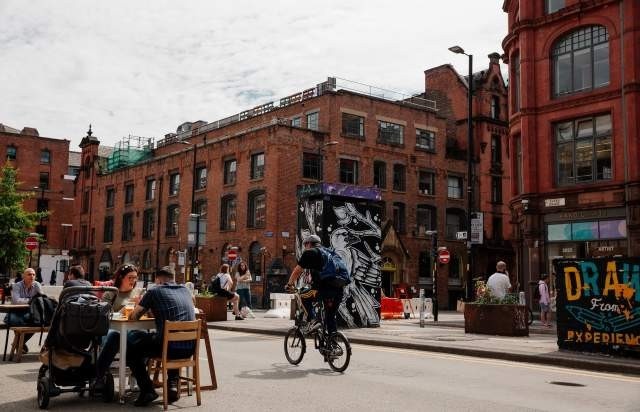
The Northern Quarter in Manchester is one of the city’s most vibrant and eclectic neighborhoods. Known for its independent spirit, bohemian vibe, and creative energy, this area has become a magnet for artists, musicians, and entrepreneurs. With its mix of street art, quirky shops, vintage boutiques, and alternative cafes, the Northern Quarter offers a refreshing break from the bustling city center, yet remains at the forefront of Manchester’s thriving cultural scene.
🌟 Highlights of the Northern Quarter
🎨 Street Art and Urban Culture
The Northern Quarter is a street art lover’s paradise, with its colorful murals and graffiti covering the walls of cafes, shops, and public spaces. These ever-changing canvases reflect the area’s urban creativity and have become an essential part of its identity. Whether you’re walking down Edge Street, Oldham Street, or Tib Street, you’ll discover new pieces of art every time you visit. The work of local artists, as well as international street art icons, can be found throughout, giving the neighborhood a dynamic and constantly evolving atmosphere.
🛍️ Independent Shops and Boutiques
Unlike the chain stores you’ll find in more mainstream areas, the Northern Quarter is known for its independent shops that offer something unique and different. From vintage clothing stores like Pop Boutique to antique shops and independent record stores, there’s always something exciting to browse. The area is also home to many art galleries showcasing local artists, as well as small, one-of-a-kind shops selling everything from handcrafted jewelry to vintage furniture.
☕ Cafes, Bars, and Restaurants
The Northern Quarter is filled with an impressive variety of cafes, bars, and restaurants that serve up everything from artisan coffee to creative cocktails. For a relaxed brunch, head to one of the area’s quirky cafes like Takk or The Smithfield Tavern, both popular spots for a caffeine fix or delicious pastries. When the evening rolls around, the Northern Quarter comes alive with independent bars and live music venues. Matt and Phred’s Jazz Club is a favorite for music lovers, while The Castle Hotel offers a laid-back pub experience with live performances.
For food lovers, the area offers a range of international cuisines, from Asian street food at places like Rasa Rasa to delicious vegan dishes at The Allotment Vegan Eatery. The neighborhood is also home to a number of food markets, including The Smithfield Market, which offers fresh produce and local delicacies.
🎤 Live Music and Nightlife
If you’re a fan of live music, the Northern Quarter is the place to be. Known for its underground music scene, the area has several venues where you can catch up-and-coming bands and local artists. Places like The Deaf Institute, Band on the Wall, and The Ruby Lounge regularly host gigs that cover everything from indie rock and alternative to electronic and experimental sounds. Whether you’re looking for a quiet acoustic set or an energetic rock performance, you’ll find something that suits your tastes.
🏙️ Historic Architecture and Modern Flair
The Northern Quarter seamlessly blends historic and modern architecture. The area is full of charming Victorian buildings and factories that have been repurposed into stylish lofts, art galleries, and unique shops. The old warehouses and red-brick facades create an industrial yet chic atmosphere, offering visitors a mix of old-world charm with a contemporary twist.
📍 How to Get There
Address: Northern Quarter, Manchester M4, UK, situated just north of Manchester’s City Centre and within walking distance from Piccadilly Gardens, Market Street, and Northern Quarter’s key landmarks.
- By Public Transport: The Northern Quarter is well-connected by bus and tram services. The nearest tram stop is Piccadilly Gardens, only a few minutes’ walk from the heart of the neighborhood. Manchester Piccadilly Station is also close by, offering easy access for travelers arriving by train.
- By Foot: The Northern Quarter is just a short stroll from Manchester’s shopping district, making it a convenient stop for anyone exploring the city center. The area’s small streets and alleyways are perfect for a walking tour.
- By Car: While there are parking spaces around the Northern Quarter, driving in the city center can be challenging. Public transport or walking is often the best way to get around.
🕒 Visitor Information
- Best Time to Visit: The Northern Quarter offers something exciting no matter the time of day. For those who prefer a quieter, more relaxed vibe, visiting during the weekday afternoons offers a peaceful atmosphere. If you’re after live music, nightlife, or a lively cafe culture, the weekends or evenings are the perfect time to visit.
- Admission Fees: There are no entry fees for the Northern Quarter itself, but certain events or galleries may charge a small fee for entry.
- Accessibility: The Northern Quarter is relatively walkable and pedestrian-friendly. Many cafes, shops, and galleries are wheelchair accessible. However, as the area is popular with visitors and locals, it can get busy, especially on weekends.
💡 Travel Tips for Visiting the Northern Quarter
📸 Capture the Street Art:
The Northern Quarter is renowned for its colorful and constantly changing street art. Bring your camera or smartphone to capture some of the incredible murals and graffiti, which have become part of the neighborhood’s charm.
🛍️ Shop for Unique Finds:
For something special, check out the vintage stores and independent boutiques. Whether you’re hunting for rare records, secondhand clothes, or quirky home décor, you’re sure to find something that stands out.
🎶 Experience Live Music:
If you’re into live performances, plan to catch a show at one of the Northern Quarter’s legendary music venues. From jazz to indie, there’s always something happening in this creative area.
🏙️ Explore the Alleys and Side Streets:
Don’t forget to explore the hidden alleyways and side streets that make the Northern Quarter so unique. Some of the best independent cafes, art galleries, and street art can be found off the main thoroughfares.
The Northern Quarter is the beating heart of Manchester’s creative scene, where art, culture, and independent businesses come together in a vibrant and inspiring space. Whether you’re a shopper, music lover, foodie, or just someone looking to explore the hidden gems of Manchester, this quirky neighborhood offers a fresh and exciting experience that’s perfect for anyone seeking something off the beaten path.
Heaton Park
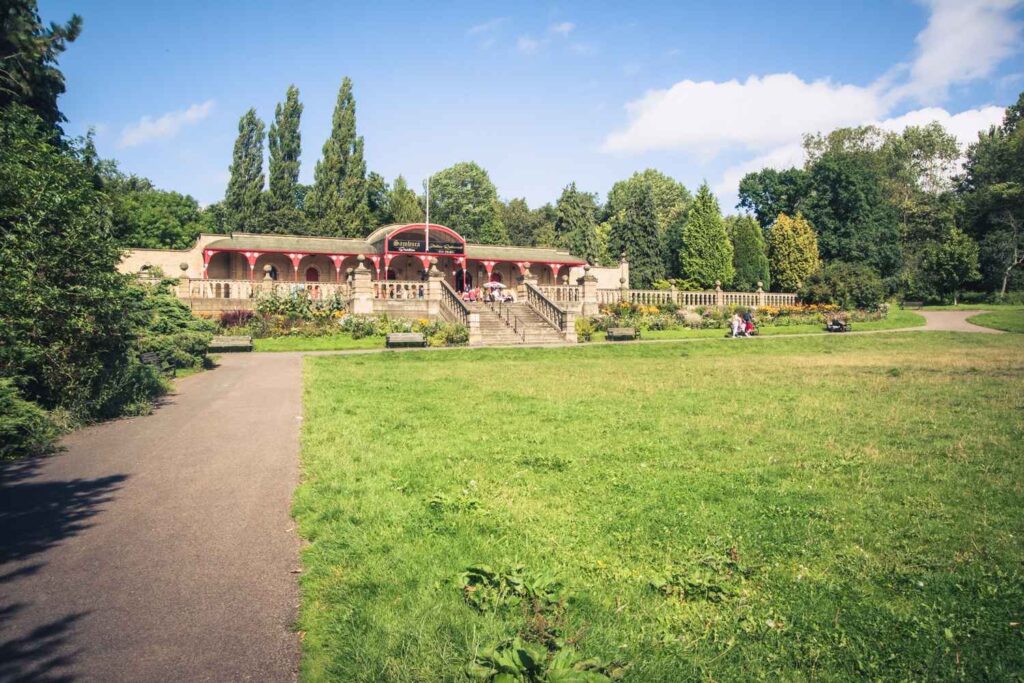
Heaton Park, one of the largest urban parks in the UK, is a tranquil haven in North Manchester. Covering over 600 acres, this expansive green space is perfect for a variety of activities, from leisurely walks to family outings, picnics, and even outdoor concerts. Whether you’re a nature lover, a history enthusiast, or someone simply looking for a peaceful escape from the city’s hustle and bustle, Heaton Park offers something for everyone.
Heaton Park is not just a beautiful green space; it’s also home to historic buildings, wildlife, and a working farm, making it a great destination for a wide range of visitors. From strolling through manicured gardens to discovering the park’s hidden gems, Heaton Park is one of Manchester’s most cherished outdoor spaces.
🌟 Highlights of Heaton Park
🌳 Expansive Green Spaces & Gardens
- Heaton Park is perfect for relaxing in nature. With its vast lawns, tree-lined paths, and serene lakes, the park offers plenty of spots to unwind or enjoy a quiet picnic.
- Formal Gardens like the Walled Garden offer a beautiful display of flowers and plants, ideal for a peaceful stroll or a few photos amidst the greenery.
- The park’s woodland areas and nature reserves are perfect for birdwatching and exploring the wildlife that calls Heaton Park home.
🚶♂️ Walking, Cycling, and Outdoor Activities
- Heaton Park is a paradise for outdoor enthusiasts. You can take a leisurely walk around the park’s many trails or enjoy a bike ride through its sprawling grounds. For those who enjoy a challenge, there are also fitness trails and orienteering routes available.
- The park has several playgrounds for children and outdoor sports areas, such as tennis courts, a pitch and putt golf course, and a crazy golf area, making it perfect for families and friends.
🐄 Heaton Park Farm
- One of the park’s unique features is its working farm, which houses a variety of farm animals, including sheep, goats, pigs, and chickens. It’s a fantastic spot for families with young children to get up close to animals and learn about farm life.
- The farm also offers animal feedings and educational sessions, making it a fun and interactive way to experience nature and farming.
🏰 Historic Buildings and Attractions
- Heaton Hall, the park’s grand Grade II-listed mansion, is an architectural gem. Originally built in the 18th century, it offers a glimpse into the city’s rich history. You can visit the hall, explore its surroundings, or even attend events and exhibitions held throughout the year.
- The Heaton Park Tramway is another highlight. The heritage tram line takes visitors on a charming ride through the park, giving a taste of vintage transport from a bygone era. The trams are a fun way to explore the park and enjoy the views in style.
🎤 Events and Festivals
- Heaton Park hosts a variety of cultural events throughout the year, including open-air concerts, festivals, and community fairs. From summer music festivals to family-friendly activities, there’s always something happening at the park.
- The park’s wide-open spaces make it an ideal venue for large-scale events, such as gatherings, markets, and outdoor theater performances.
📍 How to Get There
- Location: Heaton Park is situated in North Manchester, approximately 3 miles from the city center. It’s easily accessible by public transport, car, or bike.
- By Public Transport: The Heaton Park tram stop is located right at the park’s entrance, and the Metrolink’s Bury Line provides easy access to the park from the city center. Buses from central Manchester also run regularly to the park.
- By Car: There’s ample parking available at Heaton Park, but during peak times, especially when there are events or festivals, the car park can fill up quickly.
- By Foot or Bike: The park is easily accessible from nearby neighborhoods and offers plenty of pedestrian and cycling routes.
🕒 Visitor Information
- Best Time to Visit: The best time to visit Heaton Park is during spring and summer when the weather is perfect for outdoor activities. However, the park also offers a peaceful retreat in autumn when the leaves change color, and winter when the park is covered in frost and snow.
- Opening Hours: The park is open daily, with Heaton Hall and the farm typically operating between 10 AM and 5 PM (times may vary depending on season and events).
- Admission: Entry to the park and its general areas is free, although there may be charges for special attractions, such as the tram rides and events. The working farm also has a small fee for admission.
💡 Travel Tips
- 👟 Wear Comfortable Shoes: Heaton Park is vast, so if you’re planning to explore on foot, make sure to wear comfortable walking shoes. There are many trails to discover, and the park’s terrain can be uneven in certain areas.
- 🚲 Bring Your Bike: If you enjoy cycling, Heaton Park has plenty of bike-friendly paths and trails. It’s a great place to explore by bike, and you can even hire a bike from nearby rental services.
- 📅 Check for Events: Heaton Park regularly hosts events, festivals, and concerts. Check the park’s event calendar to see if there are any activities happening during your visit that might interest you.
- 🎣 Fishing: Heaton Park’s lakes are open for fishing, so if you’re into angling, don’t forget to bring your gear or check if permits are available for fishing in the park.
Heaton Park offers a perfect blend of nature, history, and entertainment. Whether you’re looking for a relaxing day out, a fun family adventure, or a chance to immerse yourself in nature, Heaton Park has it all. Its combination of wide-open spaces, historical charm, and fun activities makes it one of Manchester’s top outdoor destinations.
The Lowry & Salford Quays
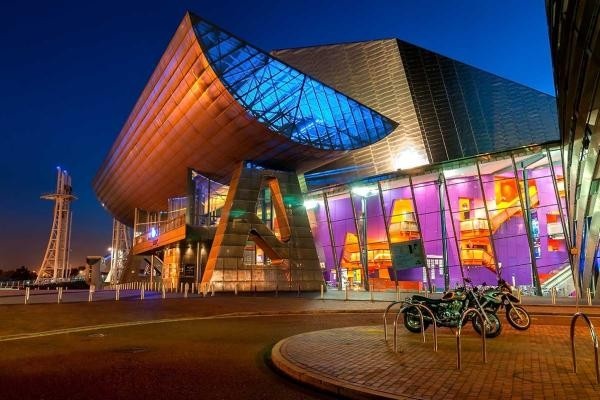
The Lowry, located at the iconic Salford Quays, is a dynamic arts venue that combines contemporary visual art with world-class theatre and performance spaces. Situated along the scenic waterfront in Salford, just a short distance from Manchester, this cultural hotspot offers something for everyone—from art lovers and theatre enthusiasts to those simply looking for a day out in one of the most vibrant areas of Greater Manchester.
Salford Quays, once a bustling industrial hub, has transformed into a thriving cultural and leisure district, with The Lowry as its crown jewel. Whether you’re visiting for a theatre performance, to explore a new art exhibition, or simply to enjoy the beautiful waterfront views, Salford Quays is a must-see destination that combines arts, culture, and leisure in one place.
🌟 Highlights of The Lowry & Salford Quays
🎨 The Lowry: A World-Class Arts Venue
Named after the famous Salford-born artist L.S. Lowry, this iconic venue is home to a wide array of visual art, theatre productions, and performances. The art galleries at The Lowry feature a permanent collection of Lowry’s work, including his iconic industrial scenes and unique characters, as well as rotating exhibitions showcasing the work of contemporary artists. The galleries are modern, spacious, and well-lit, making them perfect for an immersive art experience.
The theatre spaces within The Lowry offer a range of performances, including West End productions, musicals, dance, comedy shows, and classical concerts. Whether you’re a fan of musical theatre or cutting-edge drama, The Lowry has something to entertain and inspire you. The Lyric Theatre and Quays Theatre host some of the best performances from both local and international artists.
🎭 Theatre & Live Performances
The Lowry’s performance spaces offer a world-class venue for theatre productions, dance, opera, and music concerts. Its intimate Quays Theatre is perfect for smaller productions, while the Lyric Theatre stages major touring shows. From Broadway blockbusters and dance festivals to comedy nights and family-friendly shows, The Lowry provides a diverse range of performances that attract visitors from around the world.
🖼️ L.S. Lowry’s Collection
L.S. Lowry, the renowned artist known for his distinctive paintings of industrial landscapes and figures, is one of the most famous names associated with the Salford area. The Lowry houses an extensive collection of his works, including paintings, drawings, and sketches. The gallery offers an in-depth look at his creative process, and his matchstick men and industrial scenes offer a poignant glimpse into Manchester’s past.
🌆 Salford Quays: A Vibrant Waterfront
Salford Quays has evolved into a lively destination that combines modern architecture, waterfront views, and leisure activities. The area is home to a number of iconic landmarks, including MediaCityUK, The Imperial War Museum North, and the BBC studios. Visitors can enjoy a peaceful walk along the Quayside, explore the variety of shops and cafes, or take part in boat tours around the water.
The area also boasts a range of dining options—from trendy restaurants with views of the water to casual cafes and bars that make it a perfect place for lunch, dinner, or just a drink while enjoying the views. The Quays are also home to The Lowry Outlet Mall, offering a variety of shops and discounted designer brands, as well as a range of cinemas and entertainment options.
🚶♂️ Things to Do Around Salford Quays
Besides visiting The Lowry, Salford Quays offers plenty of other activities to keep you busy. Whether you’re looking to explore art galleries, enjoy live performances, or take a stroll around the waterfront, the area is rich with activities.
- MediaCityUK: A hub for digital innovation, MediaCityUK is home to major broadcasters like the BBC, ITV, and Salford University. It’s a fascinating place to explore, with events and exhibitions showcasing the world of digital and creative industries.
- The Imperial War Museum North: A striking piece of modern architecture designed by architect Daniel Libeskind, this museum offers interactive exhibits on war and conflict, with an emphasis on modern history.
- Boat Tours: Hop on a canal boat or water taxi and enjoy a unique perspective of Salford Quays and its stunning waterfront views.
📍 How to Get There
Address: The Lowry, Pier 8, Salford Quays, Manchester M50 3AZ, UK, situated just a short distance from Manchester city center.
- By Public Transport: Salford Quays is well-connected via tram and bus. The nearest tram station is Salford Quays (on the Metrolink), just a short walk from The Lowry. The area is also easily accessible from Manchester Piccadilly Station via bus or tram.
- By Car: Salford Quays has ample parking options, including The Lowry Car Park, Q-Park, and Salford Quays Car Park. However, traffic can be busy on weekends, so plan accordingly.
- By Foot: The Lowry is within walking distance from the Salford Quays and MediaCityUK area, making it easy to explore on foot and enjoy the surrounding landmarks.
🕒 Visitor Information
- Best Time to Visit: Salford Quays and The Lowry are great to visit year-round, with family-friendly events and festivals taking place throughout the year. The area is particularly popular in the summer, when the weather is perfect for outdoor events and walking along the quayside. The theatre shows also run all year, so there’s always something on no matter when you visit.
- Admission Fees: Admission to The Lowry Gallery is free, but theatre tickets and special exhibitions may require an entrance fee. It’s recommended to check for specific prices for performances and exhibitions on the website.
- Accessibility: The Lowry and Salford Quays are fully wheelchair accessible. There are ramps, lifts, and designated disabled access points for easy navigation. The area is also well-suited for those with limited mobility and offers accessible parking and restrooms.
💡 Travel Tips for Visiting The Lowry & Salford Quays
🎟️ Book Tickets in Advance:
If you’re planning to catch a performance at The Lowry’s theatre, it’s a good idea to book tickets in advance, especially for popular shows or events. You can easily book tickets online or via the box office.
🚶♂️ Stroll Along the Quayside:
Take time to explore the stunning waterfront area. Enjoy a leisurely walk around the Salford Quays, take in the architecture, or simply relax with a drink at one of the waterfront cafes.
🍴 Enjoy a Meal with a View:
For a memorable dining experience, book a table at one of the waterfront restaurants. Enjoy a delicious meal while taking in the scenic views of the quays.
🏙️ Explore MediaCityUK:
If you’re interested in digital media, take some time to explore MediaCityUK. It’s a fascinating area to learn about the digital and creative industries, with plenty of public events, exhibitions, and workshops.
The Lowry & Salford Quays is a must-visit destination for anyone in Manchester looking to experience the best of art, culture, and modern leisure. Whether you’re captivated by the stunning art collections at The Lowry, enchanted by a world-class theatre performance, or simply enjoying a relaxing day by the waterfront, Salford Quays is a vibrant and engaging destination that offers something for everyone. With its mix of history, innovation, and creativity, The Lowry and Salford Quays provide an unforgettable experience for both visitors and locals alike.
National Football Museum
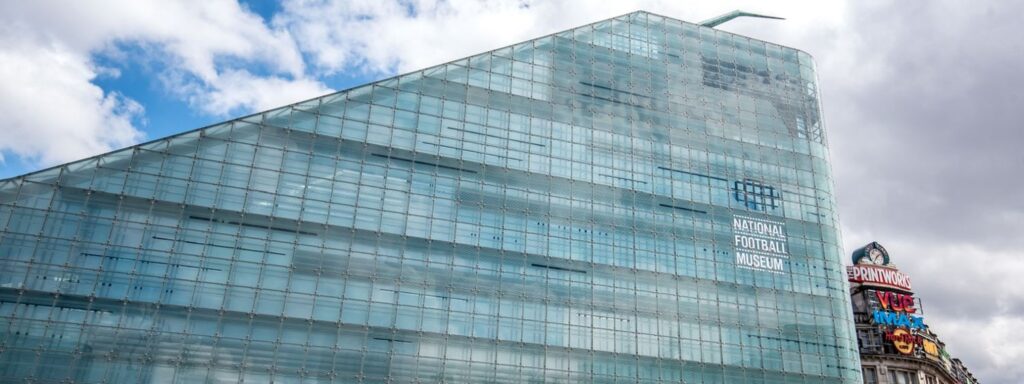
The National Football Museum, located in the heart of Manchester, is the ultimate destination for football fans, sports enthusiasts, and anyone with an appreciation for the rich history of the beautiful game. With a collection spanning over 150 years of football history, this museum celebrates the culture, legends, and stories that have shaped the sport into what it is today. From iconic trophies to interactive exhibits, the museum is a must-visit for anyone passionate about football.
The museum is not just about trophies and statistics – it also dives deep into the emotional and social impact football has had around the world, making it a fascinating stop for both seasoned fans and newcomers to the sport.
🌟 Highlights of the National Football Museum
🏆 Iconic Trophies and Memorabilia
- The museum houses a range of football trophies, including the famous FA Cup, Premier League trophies, and the World Cup. You can marvel at the England World Cup trophy from 1966, platinum footballs, and historic kits that have been worn by legendary players throughout the years.
- Match-worn shirts and boots, along with autographed memorabilia from football icons such as Pelé, Cristiano Ronaldo, David Beckham, and Diego Maradona, offer a peek into the lives of some of the most famous figures in the sport’s history.
⚽ Interactive Exhibits and Experiences
- The museum is known for its hands-on exhibits, which allow visitors to engage with the sport in an interactive way. The Penalty Shootout Challenge lets you test your skills by stepping up to take a penalty in a virtual match environment.
- Other interactive zones include the commentary booth, where you can try your hand at calling a match, and the skills zone, where you can measure your agility, speed, and accuracy against a range of football-related challenges.
- The museum also features historic football games that visitors can watch and learn from, offering insights into pivotal moments that shaped football history.
🎤 Football Stories and Cultural Impact
- The museum takes you on a journey through the evolution of football, showcasing how the sport has impacted different cultures and communities around the world. You’ll learn about the global influence of football, from its roots in England to its spread to every corner of the globe.
- Special exhibits often focus on the social side of football, exploring how the sport has intersected with issues like politics, race, and identity. The stories of football fans and how the game has inspired people worldwide are also an integral part of the museum’s offerings.
📸 Football’s Greatest Moments
- Relive some of the sport’s most iconic moments through video installations, interactive displays, and photo galleries. From World Cup-winning goals to the greatest club achievements, the museum gives you a chance to revisit legendary matches and key moments that made football what it is today.
- The Hall of Fame celebrates the greatest players, managers, and contributors to the game, with interactive displays allowing you to learn more about each inductee’s incredible achievements.
🏟️ The Football Hall of Fame
- One of the museum’s most popular attractions is the Football Hall of Fame, where you can discover inductees who have shaped football history. Legends like Sir Bobby Charlton, George Best, and Steven Gerrard are just a few of the names celebrated for their immense contributions to the sport.
📍 How to Get There
- Location: The National Football Museum is located in the heart of Manchester, near Victoria Station, making it easily accessible by foot, tram, or train.
- By Public Transport: The museum is just a 5-minute walk from Manchester Victoria Station and is also served by numerous tram and bus routes. The Shudehill Interchange is nearby, making it easy to get to from any part of the city.
- By Foot: If you’re staying in central Manchester, the museum is a short walk from popular spots like the Northern Quarter and Arndale Centre, perfect for a stop while exploring the city.
🕒 Visitor Information
- Best Time to Visit: The National Football Museum is an all-year-round attraction, but weekdays and early mornings tend to be quieter, allowing for a more relaxed visit. If you’re planning to visit on weekends or during school holidays, the museum may get busier with families and groups.
- Admission: Entry to the National Football Museum is free, though certain special exhibitions or activities may carry a small charge.
💡 Travel Tips
- ⚽ Plan for the Whole Family: The museum is perfect for families with kids, thanks to its interactive exhibits and hands-on activities. Kids will especially love the football challenges, while adults can enjoy exploring the museum’s history and memorable moments.
- 📅 Check Out Events and Exhibitions: The National Football Museum frequently hosts temporary exhibitions and live events related to football. Check out the website to see if any special exhibitions are running during your visit.
- 🏆 Celebrate Football Heroes: Be sure to visit the Hall of Fame to honor the players, managers, and teams that have shaped the game. The museum frequently updates the list of inductees, so there’s always something new to discover.
- 📸 Take Photos of Football Memorabilia: The museum’s historic collections and memorabilia provide great opportunities for photos. Capture your memories as you explore the world of football.
The National Football Museum is a must-visit for anyone passionate about football, whether you’re a die-hard fan or simply interested in the cultural impact of the sport. With its vast collections, interactive exhibits, and celebration of football history, it’s the perfect place to immerse yourself in the world of football and relive the moments that have made the sport so special.
Chetham’s Library
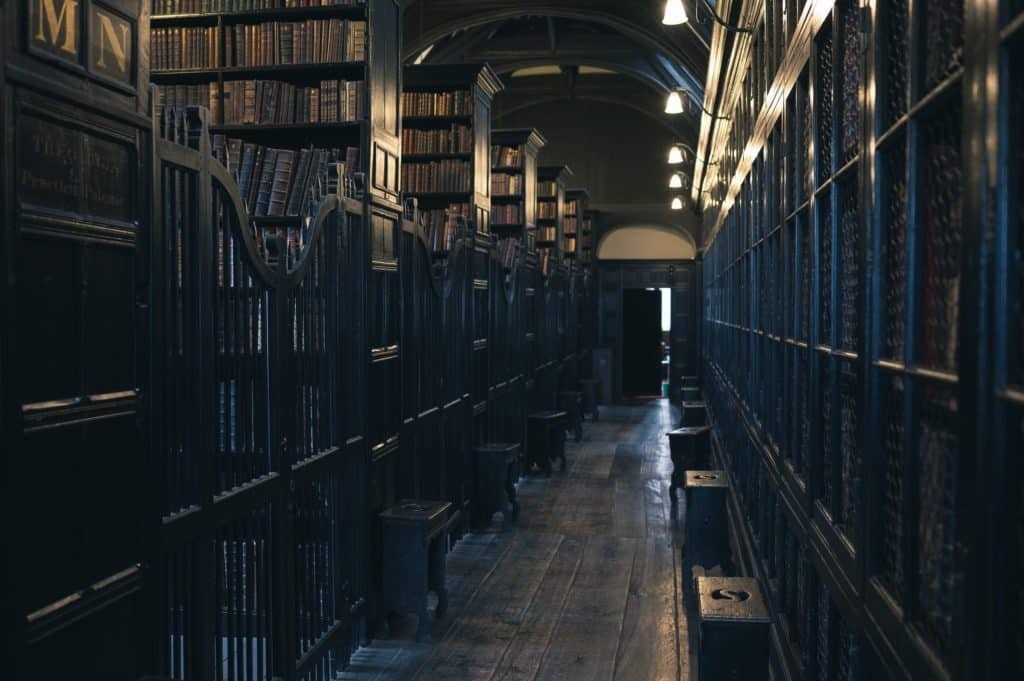
Chetham’s Library is one of Manchester’s oldest and most atmospheric landmarks, offering visitors a unique glimpse into the city’s rich literary and intellectual heritage. Established in 1653, it is the oldest public library in the English-speaking world and boasts a remarkable collection of books, manuscripts, and archives that are of national and international significance. Located next to Chetham’s School of Music and close to the Manchester Cathedral, this historic library is a must-visit destination for book lovers, history buffs, and anyone with an interest in the written word.
🌟 Highlights of Chetham’s Library
📖 A Historic Literary Haven
Step back in time as you walk through the medieval-style library, with its wooden shelves stacked with ancient books, some of which date back to the 15th century. The library’s main room is filled with original oak bookcases, creating an atmosphere that feels like stepping into the past. This is not just a place for reading—it’s a living archive of history and literature, and a quiet sanctuary for those looking to escape the hustle and bustle of the city.
The library’s collection includes rare books, manuscripts, and maps, many of which are of significant historical and cultural value. Some of the texts date back to the 15th and 16th centuries, while others are from the 17th century, reflecting the library’s centuries-long role in preserving knowledge.
🏰 The Architecture and Atmosphere
The architecture of Chetham’s Library is just as fascinating as the collection it houses. Built in the early 15th century, the library occupies a medieval building that was originally a wealthy merchant’s house. Its Gothic-style architecture, complete with vaulted ceilings, arched windows, and ancient wooden beams, adds to the feeling of walking through history. The library’s reading room is one of the most atmospheric spaces, with natural light filtering through stained glass windows and casting shadows across the rows of ancient books.
✨ The Famous Visitors
One of the most intriguing aspects of Chetham’s Library is its connection to some of the most famous names in British history. The library is famously known for being the place where Karl Marx and Friedrich Engels met in 1845. Engels, in particular, spent many hours at the library while writing some of his key works, and their collaboration during this period would go on to have a profound impact on political thought. The library is often associated with the intellectual ferment of the Industrial Revolution and the rise of political movements.
📜 Special Collections and Archives
Chetham’s Library isn’t just a repository of old books; it also houses special collections that span a wide range of subjects. Some of the most notable archives include manuscripts on local history, medieval texts, and early printed works. The library’s special collections also include rare maps, musical scores, and documents from the Industrial Revolution, which help to paint a picture of Manchester’s development from a small market town to a major industrial city.
🏛️ Exhibitions and Events
In addition to its vast collection, Chetham’s Library also hosts special exhibitions and educational events that bring its history and collection to life. The exhibitions often showcase highlights from the library’s archives, and lectures or workshops provide deeper insights into the importance of these historical texts. The library also offers guided tours, where visitors can learn more about the library’s history, its rare books, and the significant figures who have passed through its doors.
📍 How to Get There
Address: Chetham’s Library, Long Millgate, Manchester M3 1SB, UK, situated in the heart of Manchester, near Manchester Cathedral and Victoria Station.
- By Public Transport: Chetham’s Library is easily accessible by bus or tram. The nearest tram stop is Manchester Victoria, just a short walk from the library. Various bus routes also pass close to the library, making it easy to reach from different parts of the city.
- By Foot: The library is located within walking distance from Manchester city centre, and its proximity to Manchester Cathedral makes it a great stop while exploring the historic district.
🕒 Visitor Information
- Best Time to Visit: Chetham’s Library is open to the public and offers a peaceful and quiet environment for visitors. For the best experience, plan your visit on a weekday, when it’s less crowded. The library is particularly atmospheric on rainy days, with the sound of rain against the ancient windows adding to the sense of history.
- Admission Fees: Admission to Chetham’s Library is generally free, although some special events and exhibitions may require a small entrance fee. Guided tours are also available for a nominal charge.
- Accessibility: Chetham’s Library is housed in a historic building with a lot of character, but this means it can be challenging for those with mobility issues due to narrow doorways and stairs. However, there are some access provisions, and the staff are happy to assist visitors. It’s always a good idea to check ahead if you have specific access requirements.
💡 Travel Tips for Visiting Chetham’s Library
🕵️♂️ Explore the Historical Significance:
Chetham’s Library is not just a library; it’s an important part of Manchester’s cultural and intellectual history. Make sure to take a moment to read about its connection to Karl Marx and Friedrich Engels, two of the most influential thinkers of the 19th century.
📚 Discover Rare Books:
The library houses some truly remarkable books. If you’re a bibliophile, make sure to check out the library’s rare book collection, which includes early printed books, manuscripts, and medieval texts.
📸 Capture the Atmosphere:
The library’s Gothic architecture and historic bookcases make it one of the most photogenic spots in Manchester. Don’t forget your camera to capture the charming beauty of the reading rooms and the ancient books that line the walls.
🏛️ Take a Guided Tour:
To gain a deeper understanding of the library’s fascinating history, book a guided tour. Knowledgeable guides share stories about the library’s past, the people who visited, and the significance of the texts housed there.
Chetham’s Library is a hidden gem in Manchester, offering a unique and intimate experience for those interested in literature, history, and architecture. Its medieval charm, historic collection, and connection to great minds like Karl Marx and Friedrich Engels make it a must-visit destination for anyone exploring the city. Whether you’re a bibliophile, a history enthusiast, or simply looking for a quiet and inspiring place to visit, Chetham’s Library provides a fascinating journey into Manchester’s intellectual past.
📍 How to Get to Manchester
- By Air: Manchester Airport (MAN) is a major international hub, only 20 minutes from the city center by train.
- By Train: Manchester Piccadilly connects easily with London, Liverpool, and Edinburgh.
- By Car: Well-connected via the M60 ring road; parking is widely available, though public transport is often more convenient.
🕒 Visitor Information
- Most museums, galleries, and public attractions are open between 10:00 AM and 5:00 PM.
- Entry to many museums and galleries is free, though donations are welcome.
- Trams, buses, and local trains are reliable and well-connected across Greater Manchester.
💡 Travel Tips
- 🎫 Book stadium tours and theatre tickets in advance, especially on weekends and match days.
- 👟 Wear comfortable shoes—Manchester is a walkable city with cobbled streets and urban parks.
- ☕ Don’t miss trying a “Manchester Tart” and sipping local craft coffee in the Northern Quarter.
- ☔ Pack for rain. A compact umbrella or waterproof jacket is a must, year-round.
- 🛍️ Explore Afflecks for unique local shopping and souvenirs with a retro vibe.
📝 Additional Information
- Safety: Manchester is generally safe and tourist-friendly. Exercise standard precautions, especially at night.
- Local Etiquette: Mancunians are friendly and proud of their city—don’t hesitate to ask for recommendations.
- Connectivity: Free Wi-Fi is widely available in public spaces, restaurants, and libraries.
- Events: Popular events include Manchester International Festival (July), Manchester Pride (August), and the Christmas Markets (November–December).
- Accommodation: From luxury hotels to boutique B&Bs and modern hostels, there’s something for every budget.
🌍 Final Thoughts
Manchester is a city that wears its heart on its sleeve—diverse, bold, and always buzzing with energy. From the echoes of industrial revolution to world-class football and cutting-edge art, it’s a place where the past and future collide in style. Whether you’re visiting for a weekend or staying longer, Manchester is bound to leave a lasting impression.

I’m Shreyash Mhashilkar — a full-stack developer by profession, and a passionate explorer of the future at heart.
With a strong foundation in both front-end and back-end , I spend my days building websites and applications that are not just functional, but scalable, intuitive, and user-focused.


